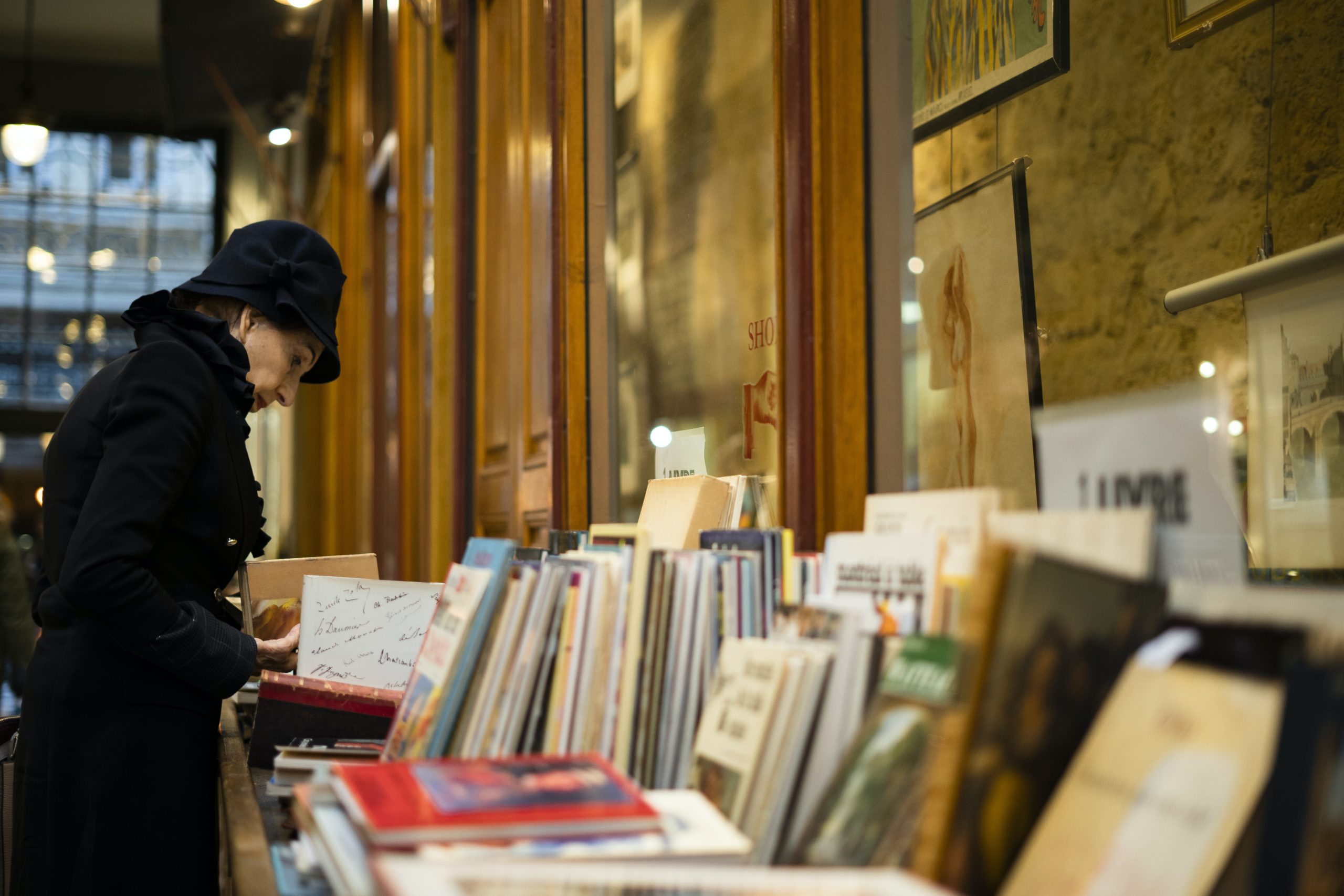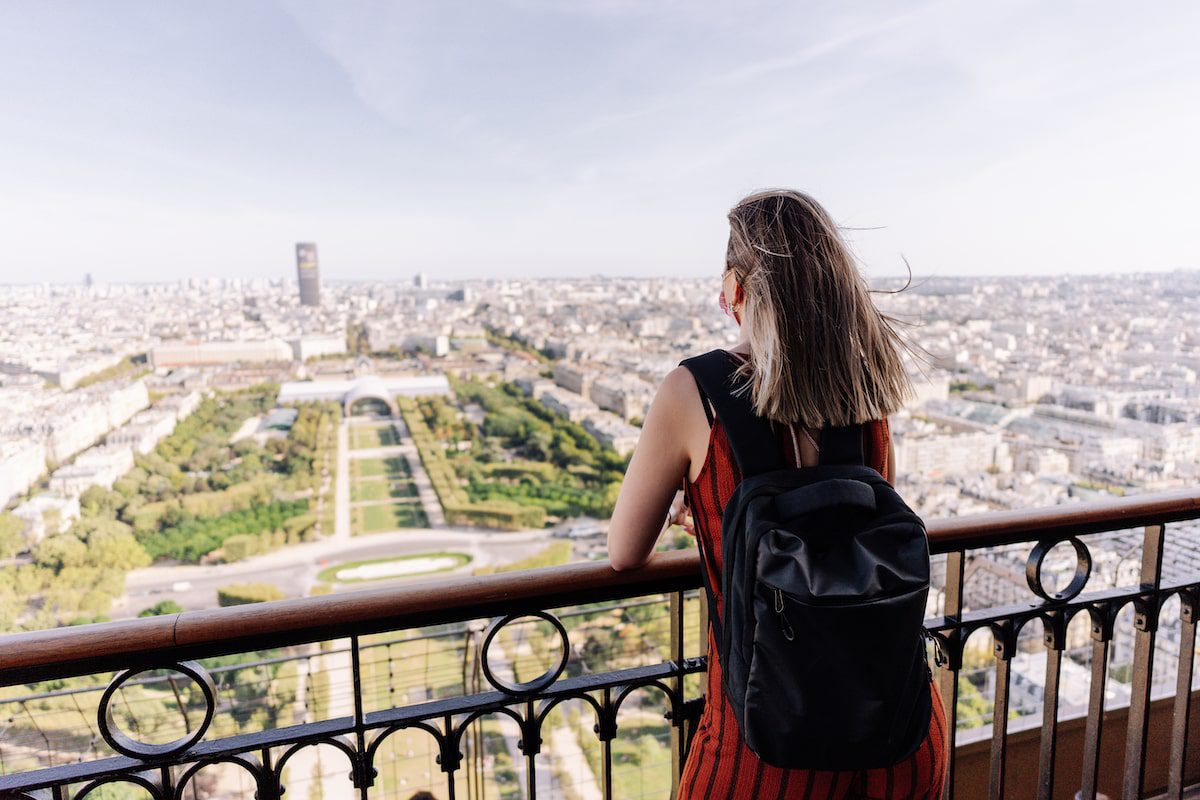Last updated on November 19th, 2023
Featured image: While not a cheap city by any means, there are ways to save money in Paris and splurge on other things | Photo by rubenchase on Envato
Six ways to save money in Paris
By Leyla Alyanak, Contributor, Offbeat France
Paris is expensive: there’s no getting around it. By the time you’ve booked your hotel, had a few meals and paid some entrance fees, your wallet may be feeling a little lightheaded. While seeing Paris on the cheap is not easy, there are ways to reduce the sting and stretch your dollars. If you cut back where you can, you can save your money for the things you really want to do and for a splurge or two.
Here are six areas in which you can apply your money-saving skills and cut down some of the basic costs of your visit to Paris.
Six ways to save money in Paris
1. Accommodation: Look for alternatives
Open any hotel booking site and you may need some smelling salts. Hotel prices in Paris are extortionate, and even Airbnb and VRBO, the traditional budget alternatives, are often outlandishly priced. Hostels, usually the refuge of the broke backpacker, are also costly in Paris, unless you’re willing to bunk in a room with a group of strangers, which I am not.
So what to do? How to sleep in Paris without blowing your entire budget?
Here are the two strategies I use to significantly diminish the cost of accommodation in Paris.
First, I choose my dates wisely. If you visit in November or February/March, prices will be up to one-third cheaper than in May, which is when everyone wants to visit. I was shocked to find a room for under US$200 in November which went for nearly US$800 a few months later. Check every month’s prices before you book.
Second, get away from downtown. Everyone wants to be within walking distance of Montmartre or the Eiffel Tower but that’s why you pay so much. Paris has an extraordinary public transportation system, so you’ll be able to get everywhere without hassle. My favourite Paris away from Paris hub? Versailles. It’s safe, it’s attractive, and it’s only half an hour from Paris, with plenty of trains and metros (RER, the regional lines) to get you there.
Find a place to stay in Paris and the surrounding areas here!
Read More: Five Superb Day Trips from Paris by Train.
2. Food and drink: Find the nearest “boulangerie”
Of course you’re in Paris and of course you’ll want to sample all that delicious French food – but it doesn’t have to break the bank. By saving money on some meals, you’ll be able to splurge on that Michelin one-star you’ve promised yourself to test.
If breakfast is included in your hotel, then wonderful, eat away. But if not, it’s often an expensive meal: why not wander down to the nearest “boulangerie” and order up a croissant and a coffee to go? Then sit on one of the city’s many benches and watch the world go by.
About that Michelin restaurant – go for lunch, not dinner. All restaurants in France have some sort of a lunch special, whether a dish of the day or a special lunchtime menu. You’ll get to taste the classics of the kitchen, but without the dinner price tag.
If you decide that dinner in a restaurant is a must, then economize on lunch: head for the nearest market (“le marché”) and buy some cold cuts, cheese and fresh fruits. Stop at the boulangerie for your baguette along the way. (And you already know where to find a bench.)
Whatever your sitdown meal, ask for tap water (“une carafe d’eau”) rather than bottled water. There’s every chance that what you save will pay for a glass of wine.
And finally, as you search for a restaurant during your explorations, try to distance yourself from the tourist traps. If you’re near a major attraction, walk a few blocks beyond it before you eat. You’ll avoid inflated tourist prices, and possibly have an even better meal.
3. Transportation: Use the bus and metro
In Paris, the bus and metro system is definitely the way to go. Taxis can be expensive, Uber a bit less so, but either way you have to contend with traffic, which can be dense, especially since many streets are limiting traffic.
I buy a Paris Visite card – you can get them for anywhere from 1-5 days and for several zones, including the more distant destinations like Versailles, Disneyland, or the Paris airports. You can buy your Paris Visite at any metro or RER station, both at the ticket counter and in the automated machines.

Leyla suggests visiting in the off-season to save on accommodation / Photo by RossHelen on Envato

Save money in Paris at flea markets and second-hand shops / Photo by Mat Napo on Unsplash
4. Sightseeing in Paris: Discover free museums
Of course, seeing the sights is high on our list when we visit Paris, and this is where money can easily be frittered away – a museum here, a tour there, and next thing you know, half your budget is gone.
I have a favourite pastime: riding the bus. For the price of a single ticket (or on your pass, if you’ve bought one), you can ride the Paris buses and see all the sights above ground, from the Eiffel Tower to the Arc de Triomphe and everything in-between. It’s cheaper than a city tour and if you have your guidebook with you, you’ll see and learn just as much.
If culture is what you’re after and you happen to be here on the first Sunday of the month, you’ll find many museums are free. On other days, prices often go down in the late afternoon, so check each museum. But my favourite cost-saver involves the museums owned by the city of Paris, including the delightful Musée Carnavalet, which traces the history of Paris from its earliest days – for free!
Find even more things to do in Paris here!
5. Strolling in Paris: Visit the Gardens
Paris is a city for walking. It is filled with famous streets and avenues, all of which deserve a stroll, from the mighty Champs-Elysées to the arcades of the Rue de Rivoli or the delightful streets of the Île Saint-Louis or Île de la Cité.
Remember that the gardens and cemeteries of Paris are free, so if you’ve secretly wished to visit the tombs of Jim Morrison or Edith Piaf, head to the Père Lachaise Cemetery – and there are plenty of others just as peaceful and beautiful. The city’s gardens, too, can be spectacular, from the tiny Place des Vosges to the enormous Bois de Boulogne. Enjoy an afternoon along the Canal Saint-Martin, or head up to the rooftop of the Galeries Lafayette department store for a panoramic view over the capital.
Enjoy one of the dozens of “free walking tours” advertised online or throughout the city. They’re not 100% free – you are expected to tip the guide, who doesn’t get a salary and relies on your generosity, but it’s a far cry from what you’ll pay a tour operator. Of course, you can use your guidebook and develop your own walking itinerary…
6. Shopping: Seek out flea markets and second-hand stores
Paris is definitely shopping heaven, but a glance at some of those price tags may get you to the Pearly Gates a little faster than you’d planned. It doesn’t have to be that way: you can find deals in the City of Light. Paris is littered with second-hand shops, called “friperies”, where you can pick up bargains to wear.
Looking for antiques or bric-a-brac? Then head straight for a flea market, like the gigantic Saint-Ouen, and get lost for hours in the world’s largest second-hand market.
And remember, as a (non-EU) tourist, you can get a tax refund if you spend a certain amount in a shop.
Let’s face it, Paris will never be cheap. But these workarounds will help you save a little on some things, allowing you to spend more on others, on those things or experiences that really mean something to you. What other tips do you have to save money in Paris? Share them with us below!
More Money-Saving Tips When You Travel
JourneyWoman Webinar: How to Save Money on Travel with Skyscanner
Join us on Tuesday, February 11 for a webinar with Skyscanner to bust open some myths about booking travel and ways to save money.
Holiday Travel Tips to Save Money on Flights
Five expert tips to help you save money on flights and get the most value for your dollar, from travel writer Scott Laird.
Home Exchanges and Housesitting: A Way For Seniors to Travel Responsibly and Save Money
Home exchanges and housesitting are a safe, affordable way for seniors to save money on travel while learning about local culture and traditions.






Something I found over several trips to Paris is that as a single female traveler, I was not treated well by staff in the wonderful bistros I had read about in food magazines. They seemed aghast I would be dining alone — even at lunch — and tried to offer me to tables with an odd number of diners, which was awkward when they refused or ignored me as I don’t speak fluent French (“trying” was not as charming to the French as it is to Americans when visitors do their best to speak English) and most often I was seated in the dark coat-room or near the swinging kitchen doors or even in an empty banquet room: no music, no decor, no warm lighting, poor service, same bill as everyone else. Very disappointing, and I found this to be the case in Italy as well. I spent the majority of my time picnicking (although in Italy, picnicking is illegal in many cities and you cannot sit or lean while eat). Make the memories, don’t worry about things living up to your expectations.
Unfortunately, the eating out solo is a tough nut that hasn’t been cracked in many places – including Paris. That said, it is not unusual in France to be seated at someone else’s table if you are on your own. Some restaurants, like the Bouillon Chartier, specialize in this… in my younger days, you could expect to be seated at someone’s table if you came in alone but this is now changing as people increasingly want their “own space”.
As for the language issue, well, it’s a well known fact that we French can be snooty when it comes to language, although an effort to speak French is usually met with some sort of acknowledgement. However, don’t think it’s just because you’re foreign: I remember not long ago being seated at a table of three other “solos”. After I ordered, I tried to make small talk, not much, just enough to politely acknowledge everyone’s presence. I barely received a few nods as everyone plunged back into their books and phones. Being non-French is only part of the problem – other issues are creeping rudeness, retrenchment, and an underlying uneasiness with strangers.
Paris is particularly affected, and in some other French regions you’ll be more warmly received. Paris is stunning and special, but it can also be very standoffish.
I have been to Paris many times, wandering on my own and have always been treated well. I have been to “good” restaurants alone and been well treated. I only once had one woman be rather nasty to me near the Eiffel Tower and I’ve been to Paris a dozen times over many years. I always found having a few words of French and using them worked wonders.
Hi, Great that you’ve written this guide and l agree with a lot of it, but as a Canadian who lived in Paris for 29 years, l have two remarks: l’d be curious to know where you found museums where the entrance fees change due to time of day. I don’t remember ever experiencing that. (Maybe at the Louvre, ages ago?) Second, l would be particularly careful with second-hand shops in Paris (or anywhere for that matter). Paris has a massive bedbug problem and the last thing you want is to bring some home. I have a friend who picked a book off the street and got a huge infestation. In fact, when in France, l go through Booking.com because among other benefits, it has a filter in the reviews section. You can select ‘noise’ or ‘cleanliness’, but l always type in ‘bedbugs’ in several languages. They do come up in my search sometimes. (I like Booking because you can cancel most of the time and also pay on the spot and not in advance in many cases). Personally I would not stay in Versailles, l always like to stay as close to the center as possible, so l definitely second your tip of traveling in the off season and would choose that if on a tight budget. You can find hotel rooms that are decent for € 120-150€ in the off season (l did a search in March last year and l found those prices). I personally would not want to waste precious travel time taking the RER. It may be a half hour ride, but you have to get to the RER station and wait on both ends. It ends up being longer than just 30 minutes. The last thing you want to do when you fly into Paris is get on public transport or (more) public transport if you took the RER in from the airport. A taxi to Versailles from CDG would be outrageously expensive. But that’s just my perspective. The Versailles gardens are beautiful, often extremely crowded in summer, but Versailles itself isn’t anything special as far as tourism goes. I would say it’s safe though for single women as opposed to some nearer suburbs.
You can find cheaper museums at certain times – for example, the Orsay is 4 euros cheaper on Thursdays after 6pm for the nocturne, and it’s not the only one… You make a good point about bedbugs (although this article was written before all the recent publicity) but that’s a great tip, looking for “bedbugs” in the reviews. I’ll be sure to pass it on! As for staying in Versailles, I rather like it, and there are plenty of reasonable hotels near the Chantiers train station. It’s definitely a personal choice. If I were flying into CdG I probably wouldn’t choose this option – but if I were staying in Paris for a week or more I might split my stay in two and take advantage of the lower prices.